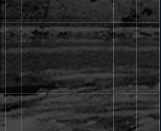|
Days
later, in what was described as the largest military operation to
date against the paramilitaries, soldiers reputedly arrested 57
participants of the massacre. President Pastrana flew in from Bogotá
to preside over a display of captured prisoners and war matériel.
But the truth was less glorious. The army's "captives"
were fleeing an encounter with the guerrillas, when soldiers saved
their lives.
Recently, intense international pressure on the Pastrana government
to crack down on army-paramilitary collusion is starting to show
results. The Commander-in-Chief, General Tapias, understands the
imperative to sunder the umbilical cord between his forces and the
AUC, and that message has begun to reach individual commanders in
the field, like the commander of the Vth Brigade in the Magdalena
Medio, General Martín Orlando Carreno. But the relationship
between the AUC, its backers, and the political and military establishments,
is rooted in a common history, linked by a common enemy and promoted
by widespread corruption--AUC commanders have no lack of funds to
buy co-operation in the field from poorly paid army officers. Moreover,
the synergy between the forces of the state and the AUC has been
permitted to grow through official passivity, denial, and a climate
of social tolerance for paramilitary crimes.
Just weeks ago, a diplomat, who requested anonymity, returned from
a visit to northern Colombia, where he had seen, "with my own
eyes," the infamous "co-patrullajes" (joint
police-paramilitary patrols). Driving up the street in full daylight,
he said, was the police car, and cruising just behind, a truck with
armed and uniformed AUC troops. When BBC reporter Jeremy McDermott
landed in Puerto Assís, Putumayo last August, looking for
the local paramilitary headquarters, all he needed to do was hail
the first taxi outside his hotel and ask the driver to take him
there.
"He did not even blink," McDermott reported, "simply
put the car in gear and sped down the potholed streets, passing
the army checkpoint and into the countryside outside town."
When he reached his destination McDermott found a luxurious villa
set back from the road, "a five minutes drive past the local
army base," and "a scene reminiscent of the drug barons'
heyday in Medellín a decade ago," complete with covered
gym, open air pool tables, and beautiful girls lounging around a
swimming pool with their crew-cut paramilitary boyfriends.
He also met a former Colombian army sergeant, who introduced himself
as the training officer of the AUC's 800-strong Southern Bloc that
controls the town and surrounding region. Commandante "Yair"
proudly informed McDermott that he was passing along the skills
learnt during his training sessions by US Special Forces in Fort
Benning and Fort Worth.
|
|

